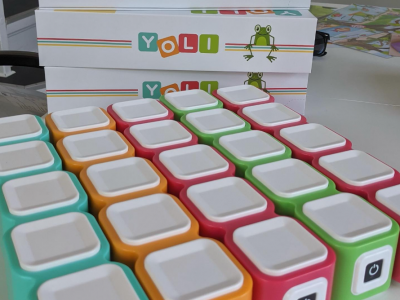Some jobs, positions or work fields must deal with a specific problem - they can be very difficult and hard to master, but they rely more on soft skills than hard ones. There are many of these professions, but as an example, let’s take User Experience (UX) Designer. This person improves the interaction between user and product. Specifics of this job lead to one uncomfortable statement.
Warning! This will be a generalisation, but let’s give it a try:
ANYONE can take up tasks of UX designer.
UX is not like programming - if you don’t know the specific language, you will not produce any line of functional code, even if you sit in front of a computer for a half year (of course you could learn programming in this time, but that’s not the case).
It’s a different story when it comes to UX. Every average person can take UX designer tasks and achieve some measurable effects. In-depth interviews? Anyone know how to ask some questions about the product. Prototypes? Everyone knows how a login screen should look like, and how to draw lines and squares on a piece of paper. Figuring out what users want from the program? It could be as simple as asking myself what I want from this kind of software.
This fact is often unconsciously used by product owners, clients, board members, and literally anyone who stands near the process of designing interfaces. One moment you will realize that instead of doing your job, you are going with someone’s else “good advice”, without even noticing that. This phenomenon is often called “micromanagement”. If you are working as a project manager, marketing specialists, artist, customer service specialist and so on - you can face the same issue.
During some kick-off meetings, brainstorms or presentations with a wider audience you could bear with some advice that could sound something like this:
“Maybe do it this way.” “But it could be solved by simply adding a new button here.” “Just change the colour of this background; it’s as simple as that.”
When it comes to creating interface solutions, everyone in the room is instantly becoming an expert in colours, shapes and human behaviour. It’s understandable in some way - everyone is using IT products on a daily basis, and know how do they look like. On the other hand - why are you still here?!
It’s not half bad when someone really has some good point. In this case, we - as experts, should put aside our ‘pride’ and get focused on what is best for a product. We don’t want to force some solutions just because these are OUR solutions. But in most cases, someone with bigger experience (as UX designer) will simply know better.
The worst-case scenario is when a person who interferes your work is higher in organisational structure than you. Because of this, some UX experts complain about the overall light tension atmosphere. Some of them even tell that the majority of their work is convincing others to certain solutions. How to deal with that?
First of all, at the beginning of the collaboration, it’s good to make clear boundaries of responsibility - I’m responsible for this, you are responsible for that.
The second way is to clearly communicate if things go out of hand. You could simply say something like this: “I think that we came over on my work field. I’m responsible for this part of the project (e. g. creating mockups), but now I feel that we are doing this together. In this case, I can’t take full responsibility for the outcome of our work. If you (or management) want to have a bigger impact on my work, we should sit down once again and redefine our terms of cooperation”. You could use your own words, but remember to be very clear and polite. Using wrong words or tone could easily start a fire, especially when you are saying something uncomfortable.
Off course - giving valuable feedback and interfering are two different things. You want to take a lot of the first one, even if the difference can be hard to spot.
Building your team position should not take too much time and emotional resources - in most cases, it should not be your main professional focus. What’s for sure, you don’t want to waste your and your colleagues time for pointless argues to prove your point. There are better ways to prove your competences.
First of all, expose ideas to external factors. For UX designer, it means to test solutions with potential users. To someone who has a different opinion than yours, you could say: “You have interesting ideas - I think that my solution will give better results, but let’s just ask users what they think, shall we?”. Then, you could create a simplified prototype, and gather some small testing user group. Of course, you could make full-fledged users tests, but if you are convinced about the results of these tests - there is no need for that. Asking a secretary or someone from the accounting office for help should do the job. Nothing is more convincing, that opinion from third party people.
Someone could ask: “But is it efficient, to organise user test whenever someone proposes other solutions? It could end with a lot of wasted time and resources.” Yes, if this kind of situation occurs, it could be very problematic. But most of the time, only one ‘test’ should be enough to mark boundaries of competences for a long time clearly.
Same situation when we calmly and deeply explain our point of view. But a similar question arises: “But is it a good idea to explain my every decision?”. The answer is the same as before - most probably, you will not have to. The single deep explanation should prove your skill and prevent next discussions in this matter.
But sometimes you will face someone who will bring out the heaviest guns to prove his point. Someone ready for a fight to the death. In this case, there is a very high probability that discussion about the product will evolve into something more - fight for self-esteem. As professionals, of course, we don’t want to be part of those conflicts. But sometimes we don’t have a choice - especially when assignments are not up to us or participating in the project is very important.
The first thing that you could do is to change your attitude - try to see the problematic person not as an enemy but as a valuable ally, your trump card. Earning respect from someone with a big ego can be very helpful. In case of some other team issues, having that guy* on our side can solve many problems.
Second: compromise. Assume that we have five fixes to implement. As an expert, you could choose 3, that you know are less important for the project and agree to do it ‘his’ way. You could tell something like: “Ok, I have an idea: let’s do those three as you want, and this two my way”. In this case, we are taking advantage of our experience and at the same time, we are giving our co-worker something that he really wants - a sense of competence. This way, we can save our project from serious damage.
And the third thing: don’t fear to tell about your successes (but don’t exaggerate!). By simply pointing places (from time to time) where your decisions give positive value to project, can convince someone that you know how to do your job.
Working with people, no matter the industry, often is more difficult than technical tasks. When reading any guides and taking advice about team cooperation, it is good to remember one crucial thing - no tool or advice gives you a 100% chance of solving any human issue. It just not works this way. All you can do is to search for the best methods for a particular case, increase chances for success and improvise because all people are different. This attitude should make you more patient and curious - and this is essential when working as a User Experience Designer.
*every character in this article can be male or female


